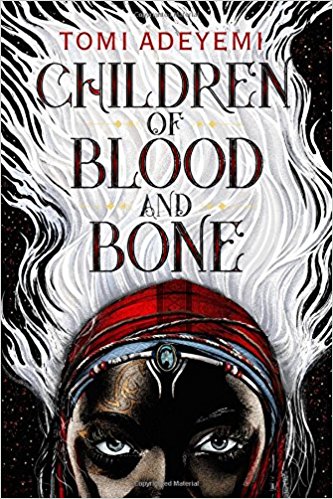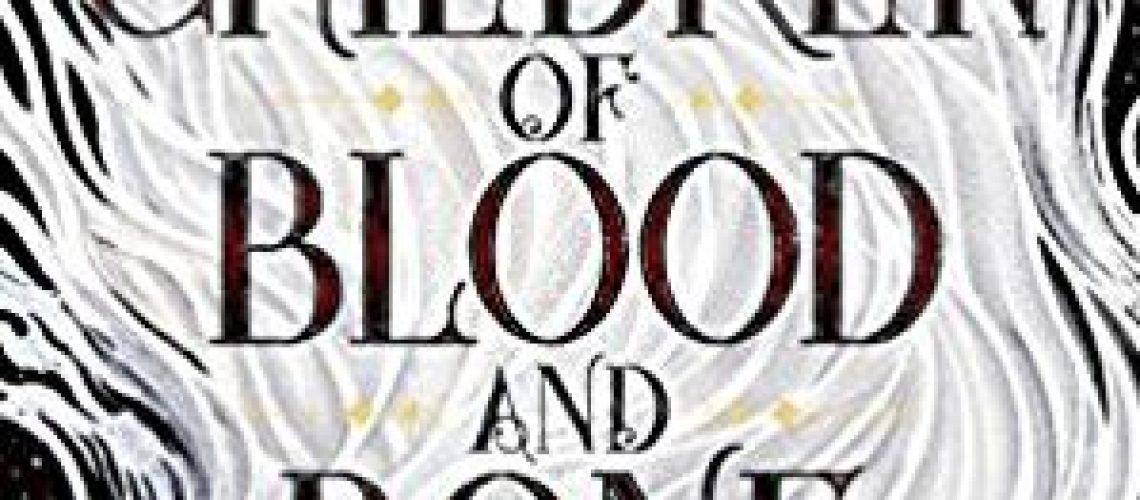Tomi Adeyemi brings to life a world where Afrofuturism meets Avatar: The Last Airbender in her stunning debut novel Children of Blood and Bone. This epic fantasy is told in first person from the perspective of three main characters: Zelie, a young Diviner with magic dormant in her blood; Amari, a timid princess who escapes the palace with a priceless treasure; and Inan, Amari’s brother, sent by the tyrannical king to hunt down the girls. Gradually, the three of them learn the truth of the world and must decide whether to work together to shape the future of Orisha.
Zelie was still a child when magic fled the world. She remembers the night clearly because it was the same night her mother, a powerful maji, was chained and hung — killed by the King’s Guard in the Raid that slaughtered every adult maji in the country. Years later, she and the other dormant maji form the underclass of Orisha. Marked by their distinctive white hair, they and their non-magic family are kept in slums, subject to unjust laws and reviled by their countrymen. Zelie has grown up in constant fear, which she has tempered into anger. As might be gathered from my review of Tess of the Road, I have a soft spot for young, angry women as characters, and Zelie is no exception. She’s impulsive and selfish at times; she doesn’t always think things through. However, she loves her family and has a strong sense of justice. And although she’s often deeply afraid, she faces life with courage.

In many ways, Amari is Zelie’s opposite. Where Zelie grew up in near poverty, Amari is a princess; she struggles to speak up, where Zelie lashes out without thought. However, the two find they have more in common than they anticipated. From the beginning, it is clear Amari knows something about living in fear, as she watches her father kill her best friend. It is also clear she has courage, shown in the way she dares to steal a rare scroll from her father and escape the palace. However, I took great delight in seeing Amari learn to dig past her fear and tap into her courage more as the story progressed. Even at her most powerful, she presents a different kind of strength to Zelie, one that roots itself more in compassion than anger.
Inan was where I most felt the influence of Avatar: The Last Airbender. This might be surprising, given that, like the cartoon, the maji’s powers fall roughly into elemental categories. The book deliberately downplayed this association by adding a few other spheres of influence — such as time, the mind, and disease — and choosing to spotlight these rather than the traditional elements. However, fans of the show will clearly see Zuko in the character of Inan. Both are young men plagued by self-doubt, conflicted loyalties, extremist behaviour and daddy issues. Unfortunately, what works in Zuko doesn’t always work in Inan. After a certain point, his changes of heart become puzzling more than convincing.
The world-building is intriguing. It’s implied that, rather than a secondary world fantasy, this is a post-apocalyptic world. Several references are made to previous empires, such as the Portuguese and the British — recognisable, despite tweaks to the names. Likewise, many places in Orisha sport Nigerian names, including the capital Lagos. The maji speak Yoruba and their deities are from the Yoruba religion. With this kind of set-up, readers should not therefore be surprised that the cast are entirely people of colour.
The plot is distinctly epic fantasy. Having stolen a scroll that returns magic to the maji who touch it, Amari runs into Zelie as she attempts to escape the palace guard. On returning to Zelie’s village, a seer sends them on a quest to retrieve two more McGuffins. Zelie, as the chosen one, must use these to return magic to the world for good. Only then will the maji have the power to defend themselves against the king and his oppressive regieme. All the while, Inan and the king’s guard are hot on their heels. Being an epic fantasy, the book is a bit on the chunky side, but the pacing works. There’s plenty of action right from the start, but it’s also balanced out with quiet moments of connection between the characters.
Power and resistance are key themes throughout the story. It wrestles with the difference between non-violence and helplessness. Zelie firmly believes the maji need their power returned in order to have any hope of standing against the king. And, indeed, their current situation is dire, with the king unlikely to respect anything other than a show of force. However, as with any power, this magic is also open to potential abuse, leading Zelie to question the wisdom of her mission. The story’s emphasis on the need for violence is an uncomfortable one, so it will be interesting to see whether that changes as the series progresses or whether it remains a challenging message.
Children of Blood and Bone is a stunning debut, managing to address challenging issues while still remaining a suspenseful adventure packed with plenty of feelings to delight shippers. It ends abruptly, after an epic climax that leaves a number of loose ends still in play. I’m looking forward to seeing if Adeyemi can top it in the next book.








One Response